Header logo
header top contact widget
Blog Archives
Recent Posts
Categories
Archives
- September 2024
- August 2024
- July 2024
- June 2024
- May 2024
- April 2024
- March 2024
- February 2024
- January 2024
- December 2023
- November 2023
- October 2023
- September 2023
- August 2023
- July 2023
- June 2023
- May 2023
- April 2023
- March 2023
- February 2023
- January 2023
- December 2022
- November 2022
- October 2022
- September 2022
- August 2022
- July 2022
- June 2022
- May 2022
- April 2022
- March 2022
- February 2022
- January 2022
- December 2021
- November 2021
- October 2021
- September 2021
- August 2021
- July 2021
- June 2021
- May 2021
- April 2021
- March 2021
- February 2021
- January 2021
- December 2020
- November 2020
- October 2020
- September 2020
- August 2020
- July 2020
- June 2020
- May 2020
- April 2020
- March 2020
- February 2020
- January 2020
- December 2019
- November 2019
- October 2019
- September 2019
- August 2019
- July 2019
- June 2019
- May 2019
- April 2019
- March 2019
- February 2019
- January 2019
- December 2018
- November 2018
- October 2018
- September 2018
- August 2018
- July 2018
- June 2018
- May 2018
- April 2018
- March 2018
- February 2018
- January 2018
- December 2017
- November 2017
- October 2017
- September 2017
- August 2017
- July 2017
- June 2017
- May 2017
- April 2017
- March 2017
- February 2017
- January 2017
- December 2016
- November 2016
- October 2016
- September 2016
- August 2016
- July 2016
- June 2016
- May 2016
- April 2016
- March 2016
- February 2016
- January 2016
- December 2015
- November 2015
- October 2015
- September 2015
- August 2015
- July 2015
- June 2015
- May 2015
- April 2015
- March 2015
- February 2015
- January 2015
- December 2014
- November 2014
- October 2014
- September 2014
- August 2014
- July 2014
- June 2014
- May 2014
- April 2014
- March 2014
- February 2014
- January 2014
- December 2013
- November 2013
- October 2013
- September 2013
- August 2013
- July 2013
- June 2013
- May 2013
- April 2013
- March 2013
- February 2013
- January 2013
- December 2012
- November 2012
- October 2012
- September 2012
- August 2012
- July 2012
- June 2012
Limit Oral Acid That Can Erode Tooth Enamel.
Posted on May 23, 2023 by William J. Claiborne, DDS MS
“After adjusting for cardiovascular risk factors and socioeconomic status, every increase in category of tooth loss was associated with a 6% increased risk of major cardiovascular events, 85% increased risk of cardiovascular death, 81% increased risk of all-cause death, and 67% increased risk of stroke. The risk increase was linear, with the highest risk in those with no remaining teeth.”
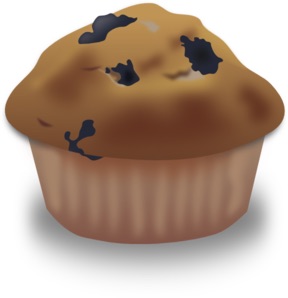

3 Things You’re Doing To Up Your Risk for Gum Disease
Posted on May 15, 2023 by William J. Claiborne, DDS MS
In life, we don’t know what we don’t know. As a periodontal specialist in Western NC, I see this a lot with adults who develop periodontal (gum) disease. Many go most of their lives unaware that certain things they’ve been doing all their lives led (or can lead) to the development of gum disease and often, tooth loss as a result.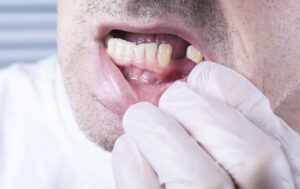
According to a report on the health of Americans (published by the CDC, the Centers for Disease Control & Prevention), it is estimated that over 47% have some form of gum disease. Although we all aspire to have a smile that is appealing, it is what lies beneath the teeth and gums that can wreak havoc on one’s overall health.
Over time, inadequate daily oral hygiene enables an overload of bacteria in the mouth. Oral bacteria are living, eating, and reproducing organisms, thriving on rotting food particles caught between teeth. They attack gum tissues and tooth enamel and eventually work down tooth roots and attack the bones and tendons that support teeth.
Early signs of gum disease are frequent bad breath along with swollen, tender and beefy red gums that bleed when you brush. As they grow in number, the gum tissues become weaker and they can penetrate the bloodstream.
Through tears in diseased gum tissues, this infectious bacteria can enter the bloodstream. This potent bacteria are now associated with a number of serious health conditions due to their ability to trigger systemic inflammation. These include heart disease, stroke, some cancers, Alzheimer’s disease and more.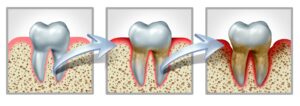
According to the American Academy of Periodontology (www.perio.org),
“Several studies have shown that periodontal disease is associated with heart disease. While a cause-and-effect relationship has not yet been proven, research has indicated that periodontal disease increases the risk of heart disease.
“Scientists believe that inflammation caused by periodontal disease may be responsible for the association.
“Periodontal disease can also exacerbate existing heart conditions. Patients at risk for infective endocarditis may require antibiotics prior to dental procedures. Your periodontist and cardiologist will be able to determine if your heart condition requires use of antibiotics prior to dental procedures.”
Obviously, the goal is to prevent the onset of gum disease. This can be done easily with the investment of just minutes per day and regular dental check-ups and cleanings. The following can give you a good idea as to what you may be doing to make you vulnerable and how to lessen your risks.
• FREQUENT SNACKING
Snacking has become pretty common over the years. Many Americans snack, with such things as a mid-morning latte or afternoon candy bar topped off by a bowl of ice-cream after dinner. All these add-in’s to three meals a day lead up to a bombardment of oral acids in the mouth.
Anytime you eat or drink, an acid attack begins in the mouth. This is a normal part of the digestive system, starting the break-down of foods during the chewing process. However, this also means that every sip of cola or bite of granola bar, an acidic bombardment occurs in the mouth for about 20-30 minutes. When the mouth endures frequent acid attacks during the day, damage to precious tooth enamel will lead to cavities.
Although Americans are the leading nation for sugar consumption, carbs also break down as sugar in the mouth. This means that the potato chips and popcorn you munch on are adding to these risks as well.
• ORAL DRYNESS
Xerostomia, commonly known as “dry mouth,” is a frequent state of oral dryness. Saliva is your mouth’s natural rinsing agent that helps cleanse oral bacteria from the mouth. This keeps bacteria to a minimum.
When saliva flow is depleted, bacteria linger in the mouth longer, giving them more time to multiply. As oral bacteria thrive, reproduce and amass, the initial result is plaque. Plaque is the sticky film you can feel on teeth.
Periodic dry mouth can occur from consuming alcoholic beverages, coffee and certain medications. Although sugary drinks don’t necessarily dry oral tissues (unless they contain caffeine), sugar enhances growth of bacteria reproduction. When food and beverages contain caffeine AND sugar, this hits the mouth with an even higher risk for oral bacteria growth.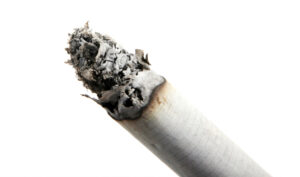
Other causes of dry mouth include medications, such as antihistamines and some prescribed for depression and urinary incontinence. Medical conditions, including acid reflux, sinus infections, diabetes and bronchitis are also contributors. A bad cold, snoring or just being in the habit of breathing through the mouth are drying as well. And – the worst culprit of all – is smoking.
• INADEQUATE ORAL HYGIENE AT HOME
Bacteria are living organisms that eat, reproduce and emit waste. Their ability to reproduce is astounding, resulting in a consistently growing number of waste-producing creatures. And they stink, causing bad breath.
Poor oral hygiene is the most common cause for bad breath. Not brushing and flossing or doing so adequately allows oral bacteria to reproduce, which leads to plaque.
When plaque is not removed thoroughly on a daily basis, it turns into a cement-hard substance known as tartar. This mass is actually a solid colony of oral bacteria that attaches to teeth. Once in the form of tartar, it can no longer be brushed or flossed away.
Tartar attacks enamel and gum tissues, causing the gum tissues to become inflamed. This inflammation can quickly develop into gingivitis, an early form of gum disease. If not resolved fully, however, gingivitis can lead to full-blown periodontal disease.
It is estimated that nearly a third of American adults brush their teeth for an insufficient amount of time. Even worse, about that same amount fail to brush twice a day. This means that an alarming amount of bacteria remain to grow and thrive in the mouth.
Proper brushing includes brushing for at least two minutes twice daily with thorough swishing afterwards. Brush using a circular motion rather than scrubbing teeth back and forth (which can damage and wear away tender gum tissues). Never use a hard bristle tooth brush or brush with harsh substances (such as baking soda).
You may be surprised to learn that brushing only tackles about half the amount of oral bacteria. The tongue actually harbors 58 – 65 percent of the bacteria in the “oral cavity.”
Oral bacteria, which take up residence in the tiny bumps and grooves of the tongue, are not easily dislodged. Thus, it is necessary for tongue cleaning to be a part of your oral hygiene regimen at home.
Some toothbrushes have a “tongue scraper” on the reverse side of the bristles that’s an effective option. Or, you can brush your tongue with the bristles after your teeth are brushed. Be sure to reach towards the back of the tongue where the majority of bacteria exist.
If you are experiencing symptoms of gum disease or have not received regular dental care, call 828-274-9440. We’ll arrange a periodontal exam in our comfortable Asheville periodontal office. Or, you can request a consultation appointment to begin. This time will allow you to get to know us and our advanced technology, often saving our patients treatment time while enhancing comfort.
If financial constraints are a concern, ask about our easy payment plans. These can break treatment fees into monthly payments that are manageable to most budgets.
Amazing Technology In Treating Gum Disease
Posted on May 09, 2023 by William J. Claiborne, DDS MS
Recently, an episode of the CBS News’ television program “60 Minutes” provided an in-depth update on the development of prosthetic limbs. Now “robotic” in description, advancements are making it possible for people with spinal cord injuries and amputations to control prosthetic limbs with their minds, including grasping objects.
What is miraculous, however, is how these advanced prosthetics can also restore a sense of touch to their brains. The decades-long project is due in most part to the Defense Department.
https://www.gao.gov/products/gao-22-106118
Technology today is remarkable. Advancements are moving forward at an impressively accelerating pace. We are witnesses to the the repair and rejuvenation of bodily parts in almost a “good as new” state. This is also true in the area of dental technology.
A periodontist is often a “behind the scenes” dental specialist, working with general dentists and various other dental specialists. While periodontists may be in the background, they stay busy. In addition to treating all stages of gum disease, these specialists have advanced skills in the placement of dental implants.
It is estimated that over 47% of American adults have some level of periodontal (gum) disease. This disease is the nation’s number one cause of adult tooth loss. However, gum health needs to be seen by the general population as a vital player in one’s overall health.
The destruction of periodontal disease is not just confined to the mouth. It spreads. Gum disease destroys bone structures below the gums. These structures are the upper and lower jaw bones, which support natural tooth roots.
The jaw bones are actually kept healthy by the presence of tooth roots. These roots provide stimulation to the bone as well as nourishment that feeds through the tooth’s interior.
By holding their roots securely, the jaw bones provide natural teeth with a sturdy foundation. This enables the ability to bite and chew comfortably and dependably.
However, when a natural tooth is lost, so is the stimulation and nourishment to that area of the jaw bone. Without it, the bone begins to shrink. As it declines in mass, the adjacent teeth are more vulnerable to loss. Statistics show that teeth adjacent to areas where natural teeth are missing will be the most likely to be lost next. This creates somewhat of a domino effect.
Dental implants were designed to recreate the presence of natural teeth both above and below the gum line. Because teeth attached to dental implants are supported by the jaw bones, the study foundation as was had by natural teeth is restored, along with the ability to bite and chew without movement or embarrassment when dentures (or partials) slip.
In addition to tooth loss, gum disease is a serious health threat. Although people are often aware of the issues that come with wearing dentures and partial, many are not familiar with the health problems associated with gum disease bacteria.
This infectious bacteria of gum disease are capable of causing inflammatory reactions elsewhere in the body. Systemic inflammation is the now-known epicenter of a number of major health problems, including heart disease, stroke, high blood pressure, diabetes, arthritis, impotency and more.
Whether the patient’s need is the restoration of gum health or the replacement of missing teeth, the advanced skills of a periodontist can be highly advantageous. Through their unique understanding, they can help to minimize treatment time and complexity of treatment.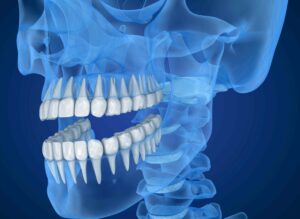
In our Asheville NC periodontal dental office, we feature some of the most advanced imaging and computerized technology available in the industry. These include:
LANAP Protocol Using PerioLase MVP-7: Efficiently and effectively treats periodontitis (advanced gum disease) with laser technology. It causes very little discomfort and has a quick recovery time. This has also been found to stimulate bone regrowth in damaged areas.
Dental Radiology With 3-D Cone Beam Technology: This imaging is ideal for diagnosis and treatment planning. The imaging covers the entire dentition area with clear views of the mandible and maxilla (upper and lower jaw).
CareStream Cone Beam Computer Tomography Imaging: This computerized tomography provides imaging in exceptional detail and range.
CS 3600 intraoral scanner: Patients no longer have to endure having impressions made with bulky, gloopy trays held in their mouths! This quickly and comfortably scans the mouth’s interior for digital impressions using a small, handheld scanner. It can also reach difficult–to–access areas in the patient’s mouth with improved patient comfort.
Simplant Dental Software for Computerized Dental Implant Placement: This system helps in pre-surgical positioning of dental implants on the computer, using a 3D model of the patient’s jaw. This aids in the selection of the implant type that ensures a precision fit.
Intraoral Camera Technology: This provides outstanding quality of images within the mouth. These images are sent to screen for a clear, crisp view so we can confer with patients on specific treatment issues.
Computer Imaging In Treatment Suites: Treatment suites are equipped with computers for convenient image sharing with patients.
Advanced Sterilization: Our custom sterilization unit adheres to (or exceeds) CDC guidelines for instrument processing protocols, particularly in the cleaning of instruments.
Fully-Equipped Surgical Suites: Relax during treatment while surrounded by beautiful mountain views of Asheville.
My staff and I also take great pride in providing patients with optimal comfort, along with an environment of respect. Some adults comes to us embarrassed by the condition of their oral health or missing teeth. Here, we strive to make patients feel they are not only in the right hands, but they are in the right place.
Comfort is supported by our sedation options. These include oral and I.V. sedation. Also referred to as “twilight sleep” or “sleep dentistry,” these sedatives are administered by skilled professionals who utilize advanced safety monitoring equipment.
I believe that the rampant number of people who have gum disease in the U.S. is largely in part due to being unaware of the symptoms. Some are easily ignored or “brushed off” as normal.
This is why it is important to be familiar with the signs and symptoms, which include:
• Red, swollen or tender gums or other pain in your mouth
• Bleeding while brushing, flossing, or when eating certain foods
• Gums that are receding (pulling away from the teeth) or make the appear teeth longer than normal
• Loose or separating teeth
• Pus between your gums and teeth
• Sores in your mouth
• Persistent bad breath
• A change in the way your teeth fit together when you bite
• A change in the fit of partial dentures
If you have any of these, you are urged to seek periodontal care as soon as possible. This disease will only worsen without treatment.
Call 828-274-9440 to schedule a consultation in our state-of-the-art Asheville periodontal dental office.


